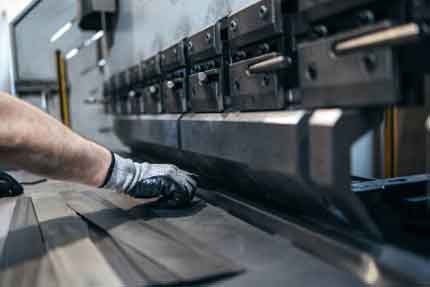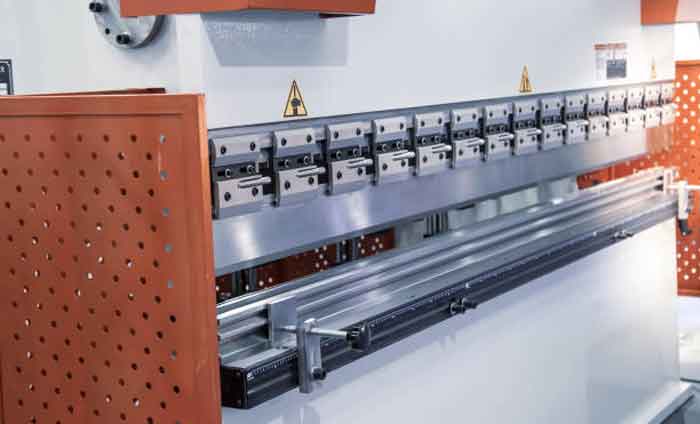Buying a CNC press brake for sale can be a good decision if you’re looking to improve productivity in your workplace. The machine has many advantages, including higher tonnage, accuracy, and efficiency. These factors make it a popular choice for manufacturers who need to cut material.
High efficiency

Compared with conventional press brakes, the CNC press brake can help fabricators improve their production efficiency. With its high control precision, this machine can quickly produce bends with great accuracy.
Fabricators are often confronted with tight tolerances and small runs. These conditions make efficient production an important factor in ensuring that a company stays on schedule.
The E-Bend L Blue angle-measurement system combines two blue lasers and a modular back gauge to maximize efficiency and accuracy. This system also allows fabricators to reduce production costs. The system’s modular back gauge allows for upgrades and improvements as needed.
In addition, the press brake’s servo-controlled system is ideal for achieving unmanned operation. This allows fabricators to avoid the high cost and labor involved with installation and set-up. It also reduces operator errors.
Accuracy
Whether you are using a press brake for one-off bends or a production line, it is important to get the most accurate bending possible. Fortunately, CNC press brakes are able to achieve accurate results with a little help from a computer.
First, you should decide on how many axes you need. The more axes, the better the bending effect. You should also consider the complexity of your bending process. Whether you are a beginner or an expert, CNC press brakes can help you determine the right angle, depth and length of your bend.
You should also consider the width of your flange. For example, a 10′ bending length is not long enough for a 12′ sheet metal flange.
Depending on your needs, you may want to invest in a machine with more axes. This will increase the cost of the machine, but it will also increase your accuracy.
Higher tonnage
Having higher tonnage can be a real advantage for the CNC press brake. This is because the amount of pressure you can apply during bending is determined by the tonnage. However, you need to use the right tonnage in order to avoid damage to the press brake.
Various types of metals have different tonnages. These include aluminum, steel, and stainless steel. These materials require a large amount of pressure to be bent. For thinner metals, a lower tonnage is recommended.
When calculating the tonnage, it’s important to take into consideration the length of the metal sheet being bent. You want to make sure you’re bending the length of the sheet as accurately as possible. This is because long materials will cause a deflection in the forming angle.
Wide range of applications
Several manufacturing industries rely on CNC press brake machine to perform complex tasks. With a CNC press brake machine, companies can perform work in-house and eliminate costly outsourcing. Moreover, the CNC press brake machine can perform multiple bends and bend different types of metal materials in predetermined shapes. It is also suitable for trial production of new products.
In addition to its versatility, the CNC press brake machine can help companies expand their business. It is ideal for production of computer panels, metal brackets, and other metal frames. The machine’s features include automatic diagnosis, real-time machine frame stabilization, and automatic testing.
With the press brake machine’s X1 and X2 axes, operators can control the shape of the resulting bend. The machine’s touch screen control allows operators to enlarge and rotate part views. The mVision software enables operators to create complex multi-dimensional forms directly on the folding beam. This software eliminates the need for advanced training.
Workplace amputations
Putting a press brake in front of an operator and leaving him to it isn’t a very safe idea. Using a CNC press brake requires caution and forethought. Those without the knowhow might be in for a rude awakening. A few lucky folks have survived the pitfalls of using a press brake, but many others have not.
The ol’ reliable tells us that the number of workplace amputations hasn’t dwindled much over the last few decades. The US Department of Labor reports an average of 368 amputations per year. For those who prefer to keep their finger on the pulse, the Tennessee Occupational Safety and Health Administration reports 352 amputations in 2007. In 2005, there were 8,450 known nonfatal amputations in the private sector.
The best way to keep a press brake from becoming a dangerous hazard is to consult OSHA’s standard for a specific machine.

